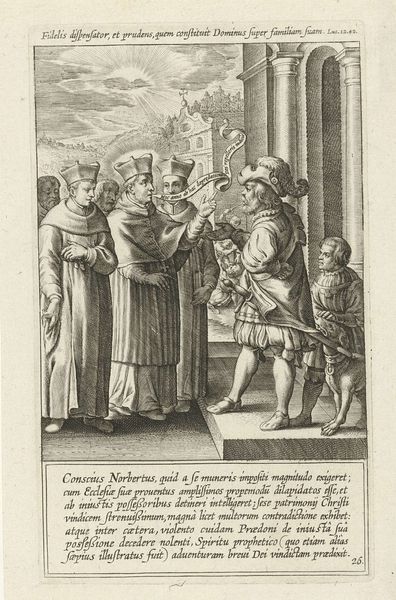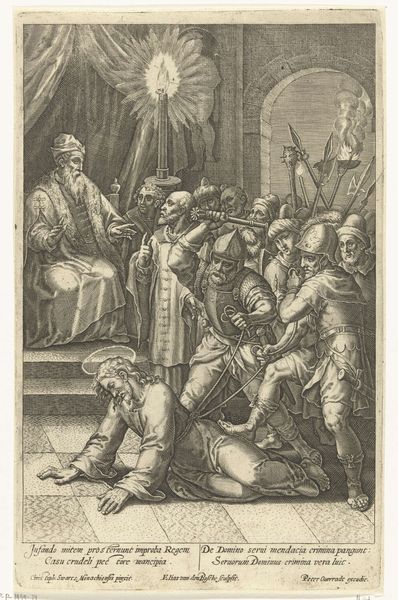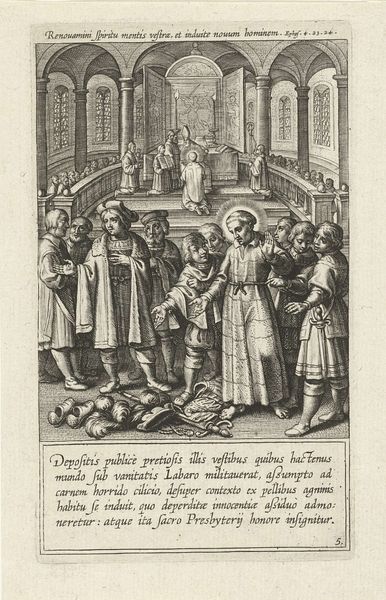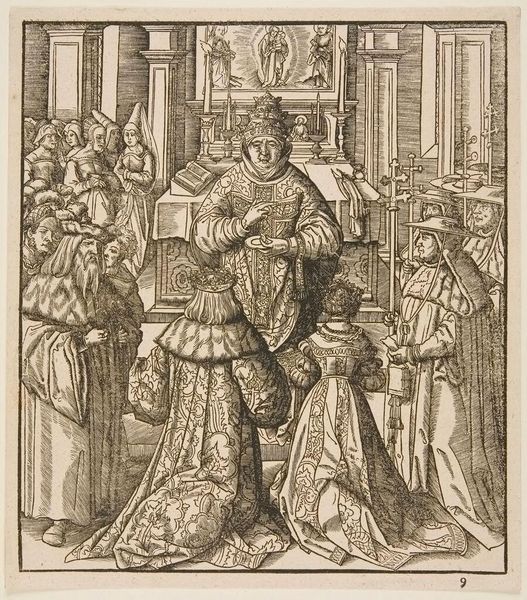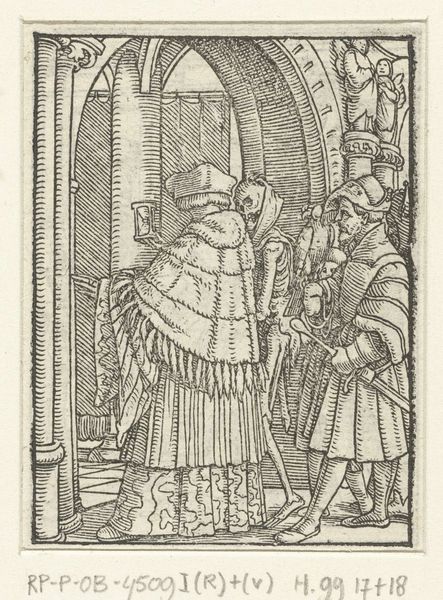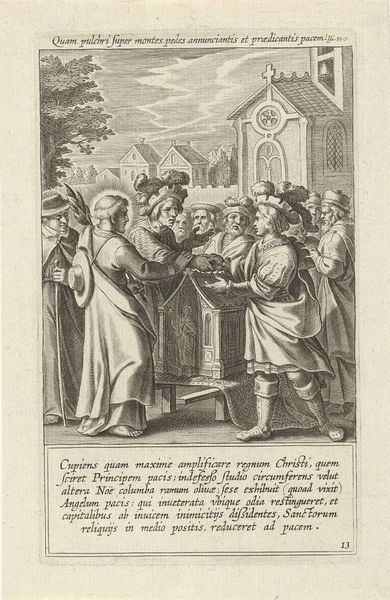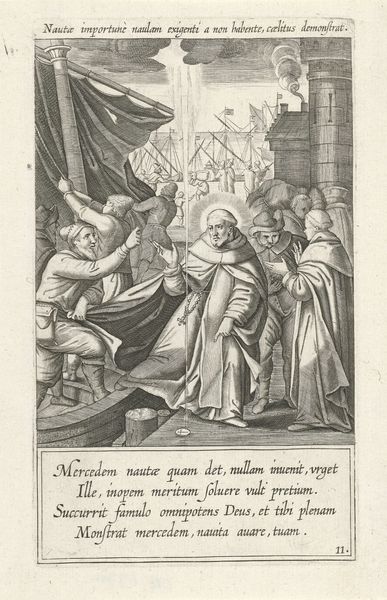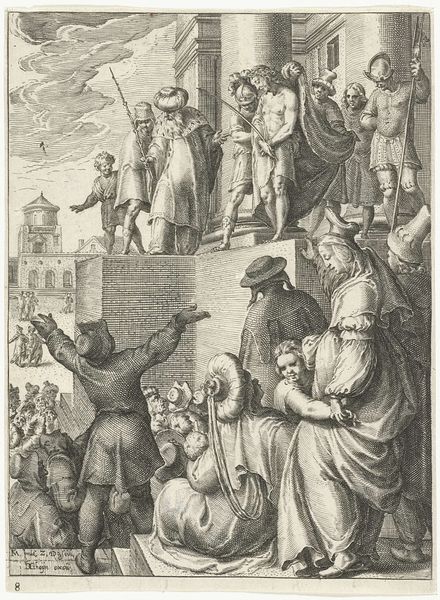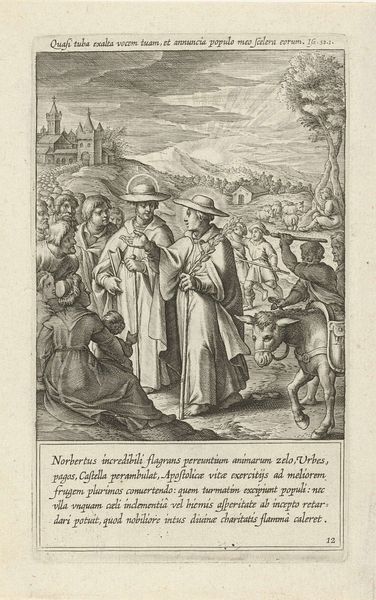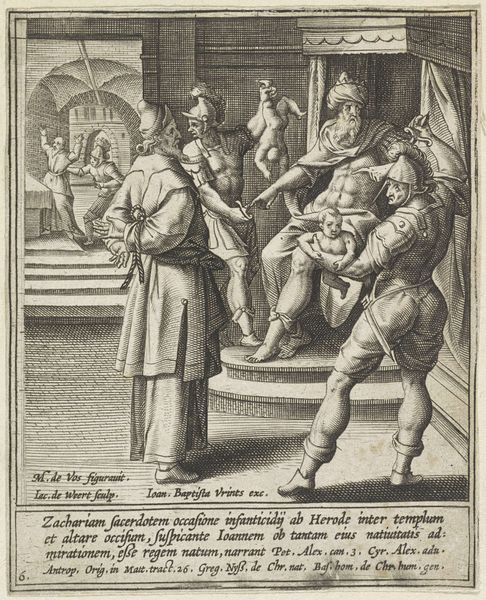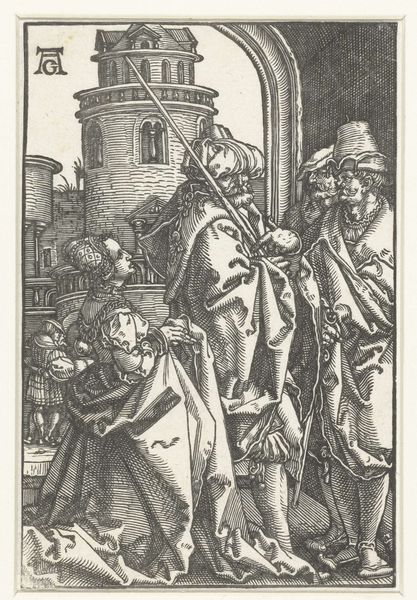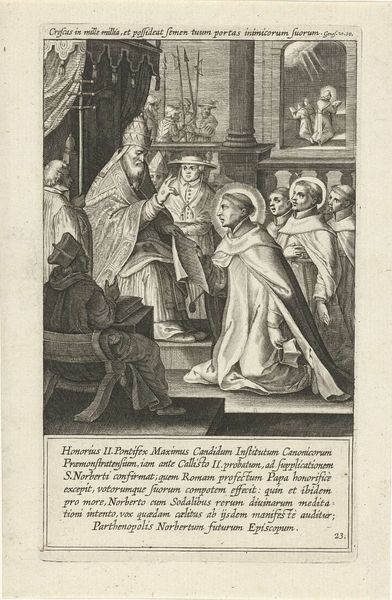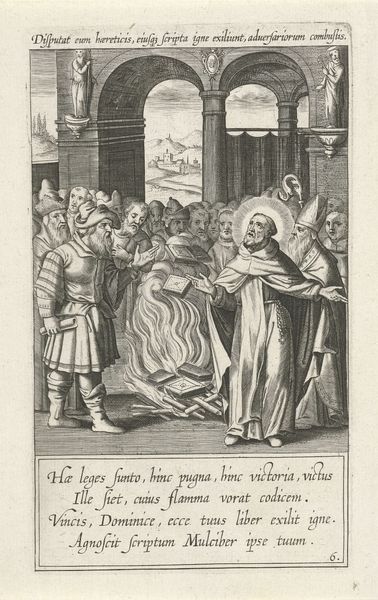
print, engraving
#
medieval
# print
#
old engraving style
#
figuration
#
line
#
history-painting
#
engraving
Dimensions: height 155 mm, width 93 mm
Copyright: Rijks Museum: Open Domain
Editor: We are looking at an engraving titled "Conversatie tussen keizer Lotharius III en de heilige Norbertus" by Theodoor Galle. The work presents a crowded scene in the old engraving style, it looks like some kind of interaction between two powerful figures. I’m struck by how the artist uses so much detail in the figures and architecture. How do you interpret this work? Curator: This engraving offers a fascinating lens into the political and religious dynamics of the period it depicts. Let's consider, firstly, what power structures are visually represented. You have the Emperor Lothair and Saint Norbert, the founder of the Premonstratensian Order, prominently featured, but surrounded by other religious and military figures, illustrating layered power structures. How does this gathering and the surrounding architecture – hinting at a fortified city – contribute to a sense of authority and legitimacy? Editor: I see how all these figures are backing them up and making a power statement. The text at the bottom also makes the image to be some kind of document of legitimization. It seems they try to represent this moment as the one where Lothair restores Innocent II in the apostolic see in Rome. Curator: Precisely! This image functions as a form of historical propaganda. Galle is not merely depicting a scene, he's actively participating in shaping the narrative of the relationship between secular and religious power. Consider where this print might have circulated and for whom it was intended. These images served to reinforce established authority but also perhaps to advance specific political or religious agendas, which sometimes were contrary to each other, raising important discussions and societal conflicts. What can you make of that? Editor: I hadn’t considered the print’s purpose beyond the purely aesthetic. It's interesting to think about how images like this one played a part in the social and political debates. Curator: Indeed. By examining this work through a historical lens, we can uncover not just the visual and technical aspects, but also the complex socio-political context that shaped its creation and reception.
Comments
No comments
Be the first to comment and join the conversation on the ultimate creative platform.
